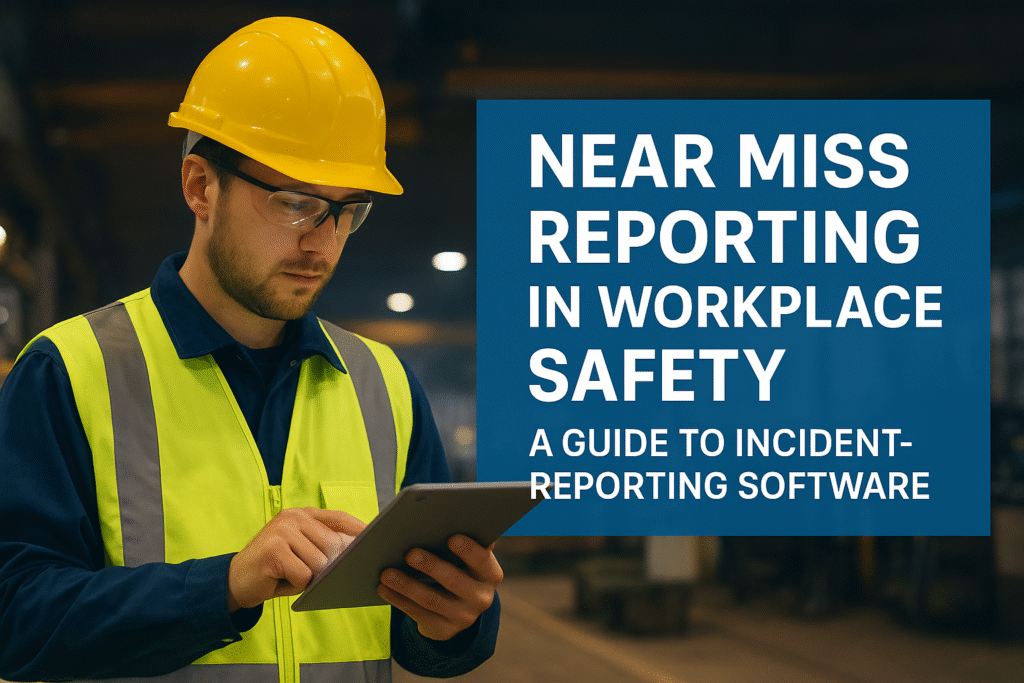
Near Miss Reporting in workplace safety is no longer just about responding to accidents it’s about preventing them before they happen. One of the most effective ways to achieve this is through Near miss reporting. A near miss is an incident that could have led to injury, property damage, or loss but did not occur. Even though these events seem small, they provide important lessons that help organizations make the workplace safer and run more efficiently.
Understanding the Value of Near Miss Reporting:
Near misses help us see hidden dangers in the workplace. They show unsafe actions, risky situations, or weak points in systems that might not be noticed until an accident happens. By recording these events, companies can take action to prevent serious accidents before they occur.
Many companies don’t realize how important near miss reporting is. Employees often don’t report incidents they think are “minor” or not a big deal. But research shows that for every serious accident, there are usually many near misses that happen first. Reporting these near misses helps prevent real accidents and keeps the workplace safer.
Limitations of Traditional Reporting Methods:
Traditional paper-based reporting often doesn’t work well for near misses. Reports can be missing, delayed, or hard to track, and checking them by hand takes a lot of time. Employees may also avoid reporting if the process is confusing or if they worry about getting in trouble. Because of this, safety problems might be missed, leaving the workplace at risk.
Managing workplace incidents with smart reporting tools:
Digital incident reporting systems make reporting near misses much simpler. Employees can quickly submit reports using mobile devices. The software often includes automatic alerts, easy-to-read dashboards, and data analysis tools, helping safety managers spot patterns, focus on the most important risks, and act quickly to prevent accidents.
When implementing reporting software, organizations should focus on:
- Ease of Use: A simple interface encourages employees to report incidents without hesitation.
- Live Visibility: Instant access to reports allows management to respond to risks immediately.
- Data Insights: Built-in analytics identify recurring hazards and highlight areas needing attention.
- Integration: The software should connect seamlessly with other safety systems, including inspections, audits, and training modules.
Making Safety a Part of Everyday Work:
Technology is only part of the solution. Organizations must cultivate a culture where employees feel safe and motivated to report near misses. Recognition, feedback, and training can encourage staff to actively participate in incident reporting. Leadership support is key when management demonstrates commitment to safety, employees are more likely to embrace reporting practices.
Benefits of Near Miss Reporting
- Proactive Risk Prevention: Identify and address hazards before accidents occur.
- Regulatory Compliance: Maintain compliance to workplace safety regulations.
- Cost Savings: Preventing accidents reduces medical, legal, and operational costs.
- Enhanced Engagement: Employees feel valued when their observations improve workplace safety.
- Data-Driven Decisions: Insights from reports help improve processes and operational efficiency.
Near Miss Reporting – The Smart Way to Prevent Accidents Before They Happen
In every industrial environment, near misses are silent warnings. They show what could have gone wrong and give us the chance to fix it before an actual incident occurs. With digital transformation, near miss reporting is now faster, easier, and more effective than ever.

Here are 5 key points that define a strong Near Miss Reporting System
- Quick Digital Reporting
Workers can instantly scan a QR code or use a mobile app to report unsafe conditions — saving time and ensuring no detail is missed. - Instant Alerts
Supervisors receive instant notifications, enabling quick action to eliminate the hazard before it causes harm. - Root Cause Analysis
Each report is tracked and analyzed to identify patterns and prevent future incidents across departments or shifts. - Encouraging a Safety Culture
When workers see their reports leading to real improvements, they become more confident and proactive in maintaining safety. - Data-Driven Decisions
Digital dashboards and analytics help EHS teams measure performance, identify high-risk areas, and improve overall workplace safety.
Conclusion
Near miss reporting changes workplace safety from just reacting to accidents to preventing them before they happen. By using digital incident reporting tools and encouraging employees to report near misses, companies can spot risks early, avoid accidents, and run more efficiently.
Today, safety isn’t just a rule to follow it’s a smart business advantage. Near miss reporting helps organizations protect what matters most: their employees and their reputation.


